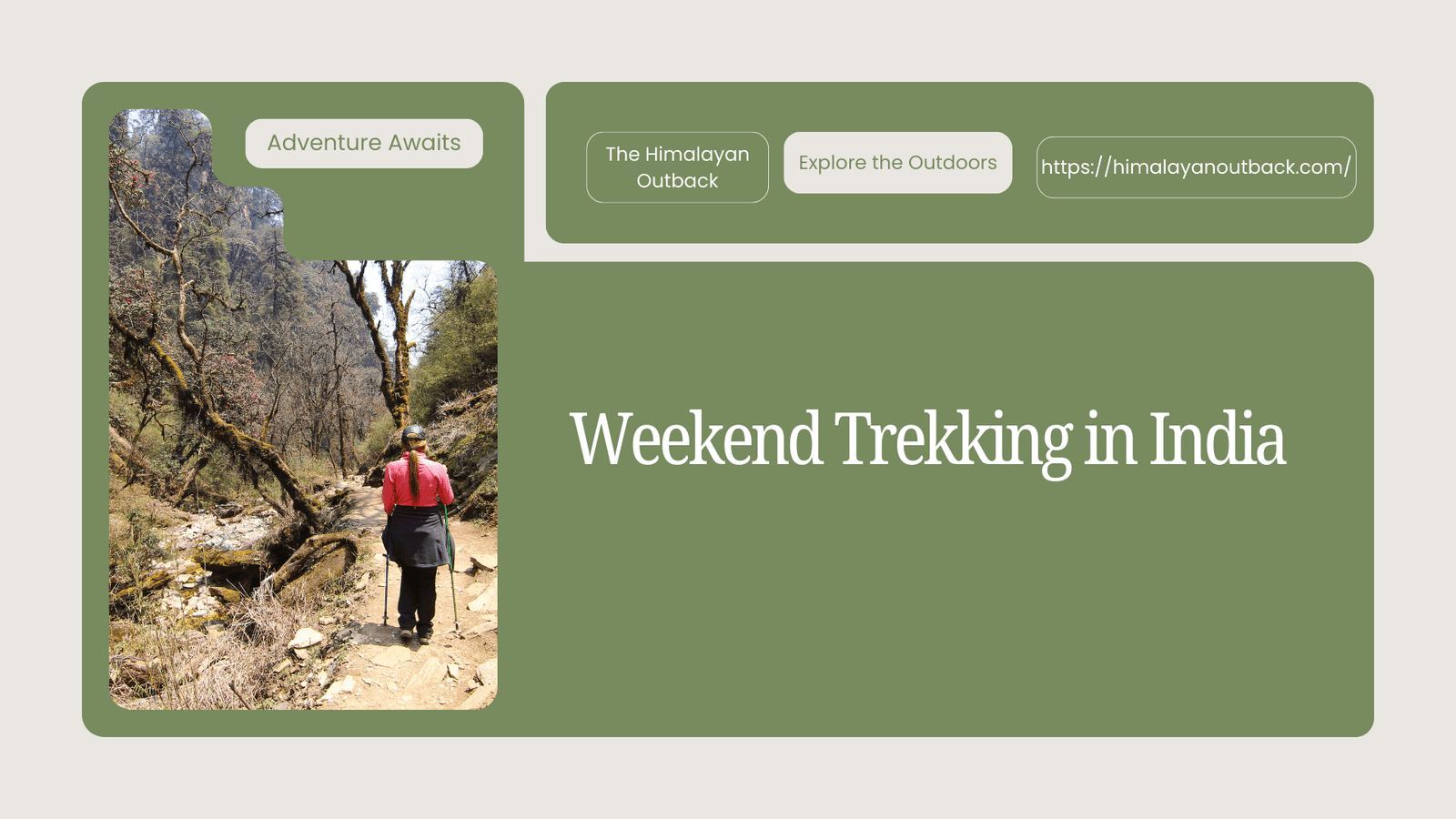The urban grind can be relentless. Between the constant pings of notifications, traffic jams, and the endless cycle of meetings, the need to unplug is more urgent than ever. Fortunately, you don’t need to take a month-long sabbatical to find peace. A mere two days is often enough to reset your internal clock, provided you know where to go.
For many, the answer lies in the hills. The landscape of the subcontinent is vast and varied, offering accessible adventures just an overnight bus or train ride away from most major metros. Whether you are looking for snow-capped peaks or lush, rain-washed valleys, trekking in India has evolved into a preferred escape for the modern professional.
It is a common misconception that you need weeks of leave and elite athleticism to enjoy the mountains. The reality is quite different. From the Sahyadris in the west to the lower Himalayas in the north, there are trails designed perfectly for the weekend warrior. These short treks offer high rewards—stunning vistas, fresh air, and a physical challenge—with a minimal time commitment.
Why Weekend Trekking in India is Booming
The accessibility of diverse terrains is what makes weekend trekking in India so unique. Unlike many other countries where you might need to travel great distances to find a trail, India’s geography places major mountain ranges in close proximity to bustling economic hubs.
This proximity has birthed a culture of “micro-adventures.” People are trading brunch dates for hiking boots. The mental health benefits are undeniable; navigating a rocky trail requires a focus that naturally clears the mind of work stress. Furthermore, the community aspect of trekking groups provides a refreshing social alternative to crowded bars and malls.
North India: The Himalayan Gateway
Best for residents of Delhi, Chandigarh, Dehradun
When you think of trekking in India, the Himalayas usually dominate the conversation. While summiting high-altitude giants takes time, the lower Himalayas in Himachal Pradesh and Uttarakhand offer spectacular weekend trekking in India options.
Nag Tibba Trek (Uttarakhand)
Known as the “Serpent’s Peak,” Nag Tibba is the highest peak in the lower Himalayas of the Garhwal region. It is arguably the best weekend trek near Delhi.
- Duration: 2 Days
- Difficulty: Easy to Moderate
- Highlights: This trail offers a 360-degree view of famous snow-capped peaks like Bandarpoonch, Gangotri, and Kedarnath. The trail takes you through dense oak and deodar forests, which are often covered in snow during the winter months, making it a perfect introductory snow trek.
Triund Trek (Himachal Pradesh)
Located near McLeod Ganj, this is perhaps one of the most popular trails for beginners exploring trekking in India.
- Duration: 2 Days (or a long day hike)
- Difficulty: Easy
- Highlights: The trail is well-defined and passes through rhododendron forests. The view from the top is breathtaking, with the majestic Dhauladhar range on one side and the Kangra valley on the other. It’s a fantastic spot for camping under the stars.
West India: The Sahyadri Forts
Best for residents of: Mumbai, Pune, Nashik
The Western Ghats offer a completely different flavor of trekking in India. Here, the trails are often green, misty, and punctuated by ancient history. The Sahyadris are famous for their hill forts, which transform into lush paradises during the monsoon.
Harishchandragad Trek (Maharashtra)
This is a favorite among history buffs and nature lovers alike. As noted by outdoor experts, the Western Ghats offer a unique trekking experience, and Harishchandragad is a crown jewel of this region.
- Duration: 2 Days
- Difficulty: Moderate
- Highlights: The main attraction is the Konkan Kada, a massive cliff that offers a terrifying yet mesmerizing view of the surrounding lowlands. The trek also features the Kedareshwar Cave, which houses a massive Shiva Lingam surrounded by water. It is a place where history and geology collide.
Rajmachi Fort Trek (Maharashtra)
Nestled between Lonavala and Karjat, Rajmachi is a dual-fort trek (Shrivardhan and Manaranjan forts).
- Duration: 1-2 Days
- Difficulty: Easy
- Highlights: During the monsoon, this trail comes alive with waterfalls and fireflies. It is a very manageable trek for beginners and offers panoramic views of the lush green Sahyadri range.
South India: The Rolling Hills
Best for residents of Bangalore, Mysore, Kochi
Trekking in India is not limited to the north; the south boasts some of the oldest mountain ranges in the world. The trails here often involve walking through shola forests and rolling grasslands that look like green carpets draped over the hills.
Kudremukh Trek (Karnataka)
The name translates to “Horse Face,” referring to the unique shape of the peak. It sits within a national park, so the biodiversity here is exceptional.
- Duration: 1-2 Days
- Difficulty: Moderate
- Highlights: The landscape here is distinct from the north. You walk through streams and dense forests before opening up to grassy slopes. It is strictly regulated to protect the environment, ensuring a pristine experience.
Meesapulimala Trek (Kerala)
As the second-highest peak in the Western Ghats, this trek takes you through high-altitude grasslands and pine forests.
- Duration: 1-2 Days
- Difficulty: Moderate
- Highlights: Located near Munnar, the trail offers views of tea gardens and the chance to spot the Nilgiri Tahr. Walking through the clouds here is a literal, not figurative, experience.
Northeast India: The Verdant Frontier
Best for residents of: Guwahati, Shillong
For those seeking something truly unique, the Northeastern states provide a version of trekking in India that feels like stepping into a fantasy novel. The humid subtropical climate creates dense, jungle-like vegetation.
Living Root Bridges (Meghalaya)
While technically more of a hike than a high-altitude trek, the journey to the Double Decker Living Root Bridge in Nongriat is physically demanding and visually stunning.
- Duration: 1-2 Days
- Difficulty: Moderate (Steep steps)
- Highlights: You descend over 3,000 steps into a lush valley to see bridges bioengineered by the Khasi people from the roots of rubber trees. It is a testament to the harmony between humans and nature.
Essential Tips for Your Weekend Trek
Even a short trek requires preparation. To ensure your foray into trekking in India remains a pleasant memory rather than a cautionary tale, keep these tips in mind.
Assess Your Fitness
Do not underestimate a trail just because it is short. Many weekend treks involve steep ascents. Engage in cardiovascular training like running or swimming a few weeks before your trip. As suggested by seasoned trekkers, physical fitness is the foundation of a good experience.
Pack Smart
For a two-day trip, your backpack should remain light. Carry only the essentials:
- Water: Hydration is non-negotiable.
- Layers: Weather in the mountains can turn quickly. Even in summer, nights can be cold.
- Footwear: Invest in trekking shoes with good grip. Sneakers often fail on slippery rocks or loose gravel.
- First Aid: Basic meds for headaches, cuts, and altitude sickness (if applicable).
Respect the Environment
The popularity of trekking in India has led to an increase in trail litter. Follow the “Leave No Trace” principle. Carry a trash bag to bring your waste back down with you. Respect local cultures and customs, especially when trekking near villages or religious sites.
Plan Your Escape
The mountains are calling, and thankfully, you don’t need to quit your job to answer them. Whether you choose the history-laden forts of Maharashtra, the misty grasslands of Karnataka, or the snowy ridges of Uttarakhand, an adventure awaits just around the corner.
Trekking in India offers a diversity of experiences that few other countries can match. It challenges your body, soothes your mind, and reminds you that there is a world beyond the concrete jungle. So, this weekend, leave the laptop behind, lace up your boots, and hit the trail.





